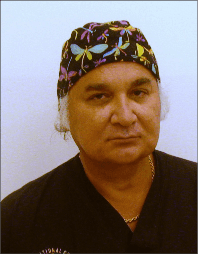The last compiled statistics on cosmetic procedures performed in the United States covered the year 2007 and were published by the American Society for Aesthetic Plastic Surgery. The results showed that the most commonly performed aesthetic surgical procedure was liposuction. In excess of 450,000 procedures were performed by board-certified plastic surgeons, with an additional 150,000 procedures performed by other specialists.
Clearly, liposuction has gained worldwide acceptance as a proven body-contouring procedure for regional areas, body sculpting, and large-volume reduction of lipodystrophy.
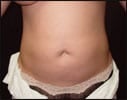 |
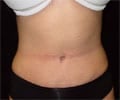 |
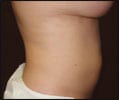 |
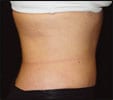 |
| Figure 1. This new radiofrequency-based technology provides reduced tissue trauma, safe and controlled application of energy and skin temperature monitoring, and uniform heating of skin and the subcutaneous layer. | |
The evolution of this surgical technique includes the following approaches to removing unwanted amounts of fat in various locations:
- Dry technique (SAL) was the first liposuction technique that was performed without the infusion of wetting solutions containing epinephrine. Blood loss was excessive, recovery was painful, and revisions were common.
- Wet/superwet/tumescent techniques require various amounts of local anesthetics and epinephrine, which are added to Lactated Ringer’s solution or other physiologic solutions to provide easier fat aspiration with less blood loss. The ratios of infusate to aspirate determine the degree of firmness or tumescence of the area(s) to be aspirated.
- Ultrasonic assisted liposuction (UAL), in which ultrasonic energy is delivered to the tissue to be aspirated, which causes cavitation of the fat, less blood loss, easier fat removal in secondary cases and fibrous areas, and a modest retraction of the skin.
- Power assisted liposuction (PAL), in which a mechanical reciprocating hollow cannula is utilized to speed the aspiration of fat compared to standard, manually performed SAL. The only benefit is the speed of aspiration. Less bleeding and skin contraction are the negatives of this procedure.
- Laser assisted liposuction (LAL) involves a small laser probe, which is used to slowly heat the fat and disrupt the fat cells. Aspiration is facilitated by the lipolysis that occurs. The exact location of the delivery of the energy is not precise, and the procedure adds significant time to the operation. Dissolved fat is aspirated and allowed to be absorbed by the body.
- Externally applied ultrasonic energy is a noninvasive use of ultrasonic energy to dissolve fat cells for localized areas. The dissolved fat is absorbed by the body, and no aspiration of dissolved fat is employed.
All of these techniques are not precise, as there is no closed-loop system to monitor power delivered, skin temperature, impedance, and total energy delivered. Uniformity of energy delivered to allow fat removal and significant soft tissue retraction are not consistent features of these devices.
Radiofrequency assisted liposuction (RFAL) uses radiofrequency energy converted from electrical energy to dissolve fat cells. The development of a computer-based radiofrequency energy delivery system is the subject of this article.
THE DEVICE
The Invasix™ BodyTite system is composed of the following:
- A bipolar radiofrequency handpiece; and,
- A RFAL computer device.
The handpiece has an internal and an external electrode. The internal electrode is coated with Teflon for the entire length of the probe. The energy is delivered at the end of the probe, which is not coated. The external electrode delivers a focused amount of energy through the skin and measures the skin temperature.
The amount of energy delivered to the fat in watts, the limit of skin temperature in degrees, and high and low limits of impedance are determined by the surgeon on a user-friendly touch screen. All parameters are controlled in a closed-loop system to prevent excessive heating of fat and/or dermis.
The delivery of bipolar radiofrequency energy has the enormous benefit of being able to quickly and precisely control the depth and direction of energy to the fat, blood vessels, and dermis.
This device allows for the following:
- High speed of treatment;
- Reduced tissue trauma;
- Coagulation of blood vessels;
- Safe, controlled application of energy and skin temperature monitoring; and,
- Uniform heating of skin and subcutaneous layer.
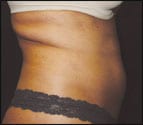 |
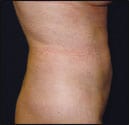 |
| Figure 2. Even in patients in whom retraction is expected to be minimal, the Invasix BodyTite system offers tissue contraction with improved contour. | |
SURGICAL STEPS
Regarding the system’s computer settings, it comes with an attached manual with suggested settings. When first utilizing this technology, conservative settings are encouraged; that is, maximum power of 35 to 40 watts, skin temperature of 40°C, and low and high impedance settings of 20 ohms and 1020 ohms.
As the internal probe is coated with Teflon, port protectors are not required. Therefore, access incisions are only 3 mm (the diameter of the internal probe).
RFAL requires ample soft-tissue wetting. This can be accomplished rapidly by utilizing an infusion pump. The ratio of infusate to aspirate is 2:1 to 3:1. Waiting at least 7 minutes for the maximum vasoconstrictor effect of the epinephrine significantly diminishes blood loss.
Radiofrequency energy delivery requires that the skin be lubricated with a sterile jelly, which does not have to be conductive.
The handheld device can be adjusted such that the internal probe can be positioned in the deeper fat. The location can be determined by pinching the skin and fat, and dividing the thickness in half to determine to depth of placement of the internal probe. Once the internal probe is placed, a spring device allows the external probe to contact the skin surface.
The closed-loop feedback computer emits a tone while the energy is being delivered and a different tone when skin contact is not being maintained. The preset energy, skin temperature, and impedance limits provide for the safe application of energy. The system will provide a tone indicating that the preset limits are being approached, and will maintain and not exceed the preset levels.
Energy is delivered to the deeper fat in zones and maintained to allow uniform heating of the deep fat. This maneuver will coagulate the blood vessels (diminishing blood loss, ecchymosis, and resultant discomfort) and dissolve the fat.
The internal probe is then moved to about 25 mm below the skin surface. The energy is delivered until the skin temperature of 42°C is reached and maintained for 2 minutes, or 2KJ. The handpiece is then moved to another zone, and the procedure is repeated.
A standard vented cannula or Power-assisted Liposuction Device (MicroAire Surgical Instruments LLC, Charlottesville, Va) is utilized to aspirate the liquefied fat. The aspirate has the appearance of a milkshake, as opposed to the traditional aspiration of clumps of fat seen with traditional SAL and PAL.
The most recent handpiece prototype features a hollow cannula, thereby allowing for simultaneous coagulation of blood vessels, lipolysis, uniform subdermal heating (producing skin retraction), and aspiration of the dissolved fat—avoiding a second step. Interestingly, unlike other devices, the narrow cannula diameter of 3 mm has been maintained in this probe. It is appealing to surgeons and patients that tiny skin-access incisions are required, as no port protectors are required.
In postoperative care, the patient receives a traditional incision closure and wears compression garments around the clock for 3 weeks and at night for an additional 3 weeks (or longer, if there are any areas of soft-tissue thickening).
CLINICAL OBSERVATIONS
The evolving technology that uses radiofrequency energy to dissolve fat has produced favorable responses from patients and interesting observations with regard to postoperative findings.
For example, patients report minimal discomfort, particularly in areas that traditionally are quite uncomfortable—such as the epigastrium and areas that have been treated secondarily.
Reduced ecchymosis provides for less discomfort due to the simultaneous coagulation of blood vessels.
You can expect tissue contraction with improved contour, even in patients in whom retraction was expected to be minimal (for example, avoiding an abdominoplasty in patients with skin laxity and lipodystrophy). In addition, the patient experiences a faster return to daily activities due to minimal discomfort.
There is a minimal risk of sequelae and complications due to the closed-loop feedback features of the device—less risk of thermal burns as the energy delivered in watts, soft-tissue impedance, and skin-temperature limit are preset.
CONCLUSION
|
See also “Energy-Based Technologies” in the March 2007 issue of PSP. |
RF-assisted liposuction is a promising technology for body contouring with the following main advantages:
- The ability to heat quickly and uniformly a significant volume of tissues with the effects of coagulation of blood vessels, dissolving of fat (lipolysis), and tightening of the skin by controlled subdermal heating; and,
- The ability to control tissue heating via the direct monitoring of temperature and tissue impedance on a user-friendly, touch screen-based, narrow-footprint computer device.
The correlation between tissue heating temperature, time of application of the energy, and the skin tightening requires additional investigation—which is in progress.
This emerging technology is the latest chapter in invasive body contouring, and appears to offer an exciting new vista in nonexcisional body contouring.
Malcolm D. Paul, MD, FACS, is a clinical professor of surgery at the Aesthetic and Plastic Surgery Institute, University of California at Irvine. He can be reached at (949) 760-5047 or .



